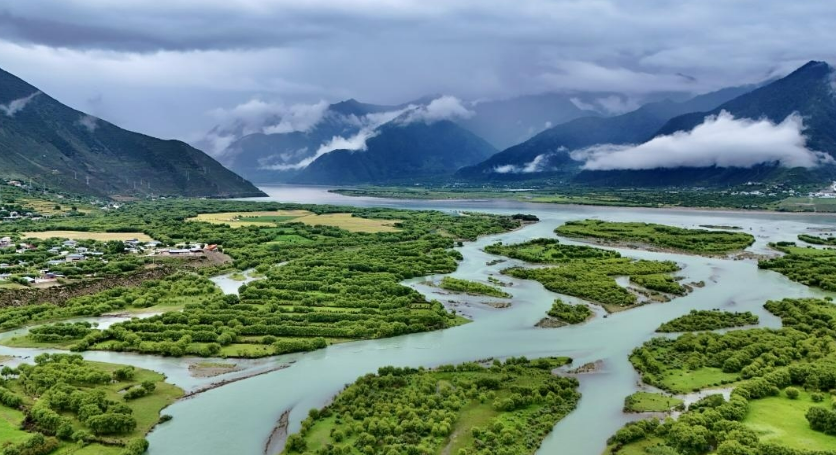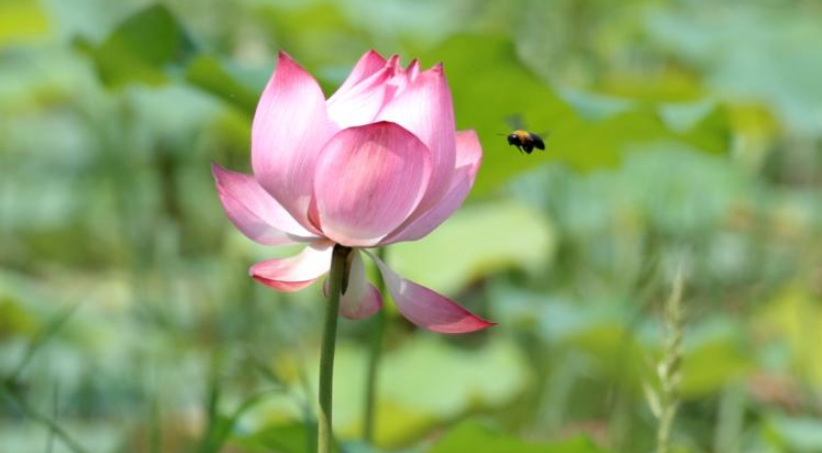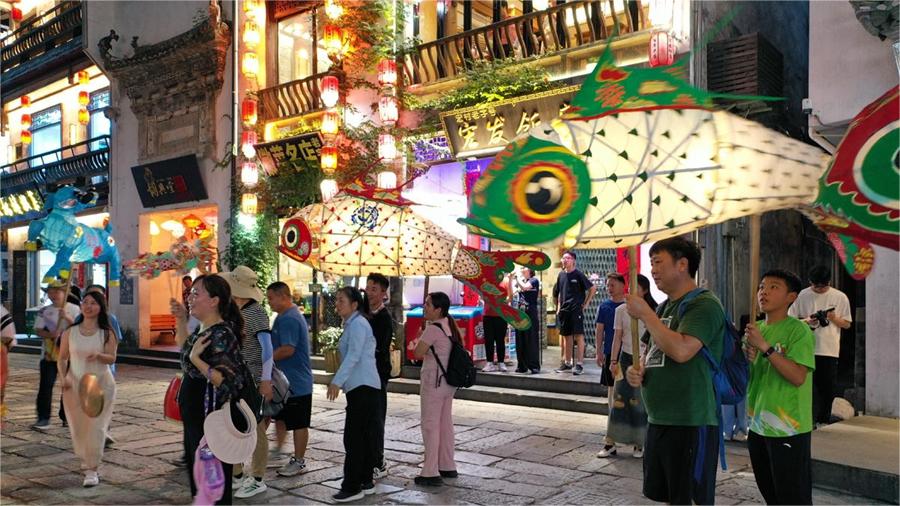Chinese inland province aims to regain historical glory through high-quality development
NANCHANG, Aug. 9 (Xinhua) -- Featuring intricately carved beams and vibrantly painted rafters, Tengwang Pavilion stands proudly on the bank of the Gan River, which winds through the city of Nanchang, capital of east China's Jiangxi Province. The current structure marks the 29th iteration of this pavilion, rebuilt numerous times over its 1,400-year history.
"It has been repeatedly rebuilt thanks to the praise it received from famous poets, and it is a symbol of national glory," said a local cultural and historical expert.
The pavilion was first built in 653 AD by Prince Teng, the brother of a Tang Dynasty emperor, and showcased China's wealth and pride as one of the largest and wealthiest countries in the world at that time. It gained nationwide fame because of the ornate verse "Preface to Tengwang Pavilion" by Tang Dynasty poet Wang Bo.
Now, this 57-meter tall tower has been reinforced, and it is attracting domestic and foreign tourists to pay their respects to it as a witness of the historical and cultural glory of Jiangxi.
"Some 1,000 years ago, the world knew of a famous place in China, namely Jingdezhen, the center of porcelain production on this planet," said Jiang Jianxin, director emeritus of the ceramic archaeology institute of Jingdezhen in northern Jiangxi.
Standing on the Tengwang Pavilion, ancient people could see fleets loaded with porcelain sailing downstream along the Gan River, heading for coastal Guangdong, from where the porcelain would be transported to the wider world. These precious porcelain products ultimately became the property of European royal families and Arab nobles.
Once one of the wealthiest regions in ancient China, the gross domestic product of Jiangxi ranked only 15th among 31 provinces, municipalities and autonomous regions in China in 2023.
To restore its glory, the province is currently striving to enhance reform and opening-up efforts for high-quality development. Notably, the city of Jingdezhen has introduced a more market-oriented mechanism, as well as modern technologies and concepts, to its porcelain production. Jingdezhen attracts around 5,000 foreign designers to make porcelain products in the city every year.
The measures taken by Jiangxi to support technological innovation have given ceramics new uses. At Lattice Power, an LED company in Nanchang, ceramics are used to package chips for LED products. The company's high-powered silicon substrate-based LED chips, used for display screens, made China the third country after Japan and the United States to secure intellectual property rights for blue LEDs.
The province has also rebuilt and expanded its connections with the world. In 2020, it established Nanchang Xiangtang International Land Port, through which many products, not only porcelain, from Jiangxi and nearby provinces are transported via trains to the world.
A huge square at the land port recently featured rows of Ford cars, which were manufactured by a joint venture located in Nanchang. Signs on the windows of these cars stated that they were of the required standard and would be sold to buyers in the Middle East.
Other products, including computer accessories, medical equipment, fruits, bags and clothing are transported by railway to Europe and then by ship to South America from Jiangxi. Meanwhile, durian fruits from Thailand and beef from Argentina are imported via the land port in Jiangxi.
Currently, the port offers 23 international freight train routes, connecting Nanchang with over 50 countries and regions.
New reform measures in Jiangxi are also improving government efficiency. An enterprise service platform have been established, which provides enterprises with easier access to business information, venture capital and legal aid. The time required to complete the procedures for opening a new company has been reduced to three to five days.
"The government shall provide services and help enterprises solve problems and ease worries," said Hu Hai, executive deputy chief of Nanchang's Xihu District.
The changes in Jiangxi are mirroring China's efforts to achieve national rejuvenation. The 20th Communist Party of China Central Committee held its third plenary session last month, urging the whole country to work hard to build China into a great modern socialist country in all respects, and strive to advance the rejuvenation of the Chinese nation on all fronts through Chinese modernization.
The landmark Xiaoping Trail in Nanchang was the only path available for Deng Xiaoping to walk from his residence to the factory where he worked as a laborer in the early 1970s. This was one of the lows of his political life, but at the factory he learned about the poverty of workers and was determined to make a positive change.
In 1978, when Deng started China's reform and opening-up drive, per-capita GDP in the country was less than 200 U.S. dollars. The reform process started almost from scratch, but today China is the world's second largest economy, with per-capita GDP exceeding 12,000 dollars.
Wan Cuihua, who used to work in the same workshop with Deng, said "on this trail, he had the initial ideas of reform. We are still following in his footsteps."
Photos
Copyright © 2024 People's Daily Online. All Rights Reserved.









